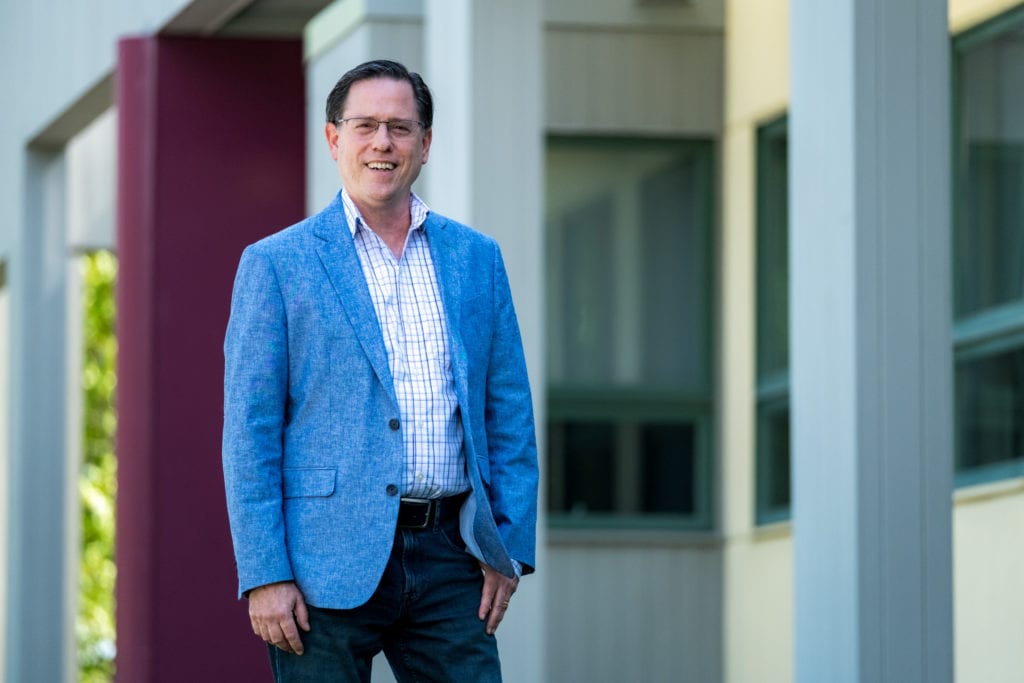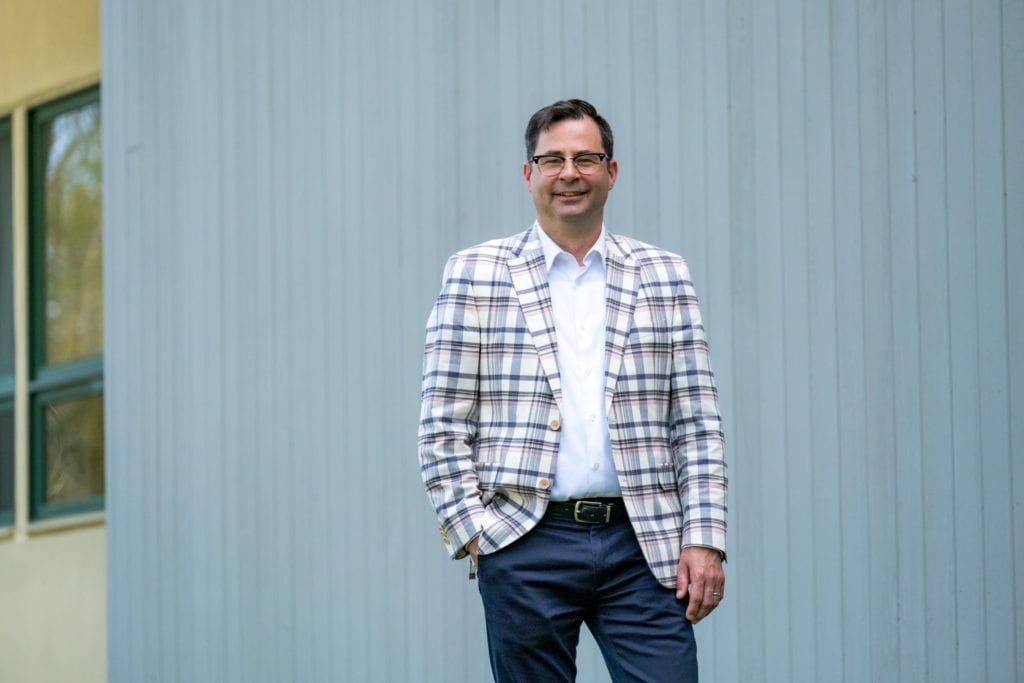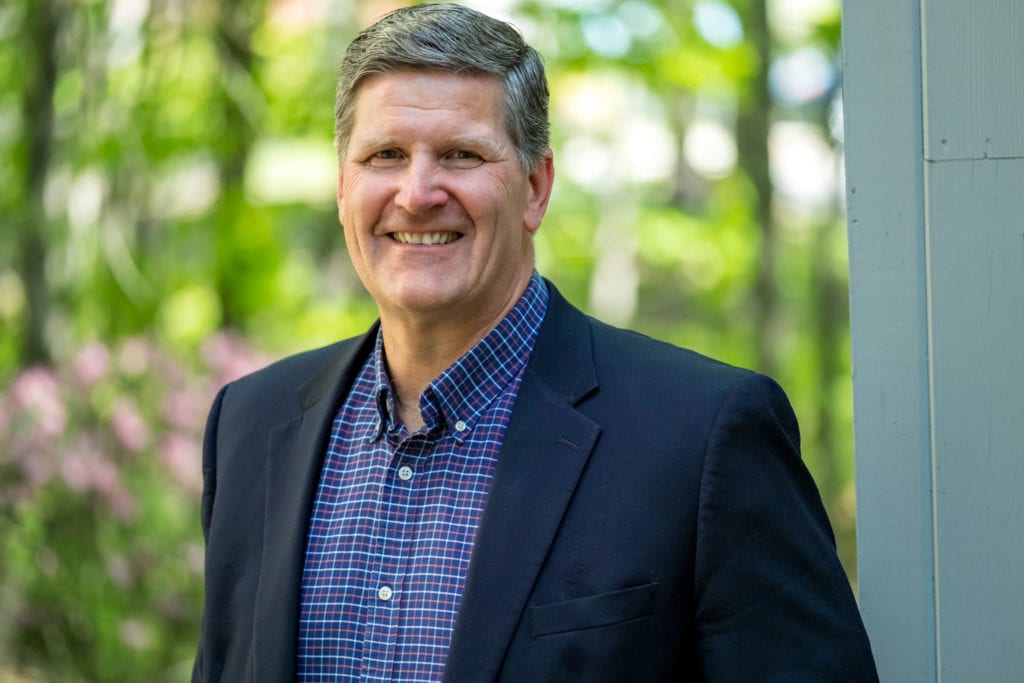By Michael Krapovicky | Photography by Brewster Burns
Harriman is celebrating 150 years as the premier architecture and engineering firm in LA, in 2020. It is an incredible milestone rarely met by any company – a testament to their dedication to quality and exceeding customer expectations. A Harriman building is ubiquitous on the main streets of most Maine cities, their structures outlying the LA landscape- and beyond- with utility and elegance. On June 1, 2020, Mark Lee and Jim Fortin will officially become Chief Executive Officer and Chief Operations Officer respectively, and the new management team seeks to maintain Harriman’s legacy of excellence. Through innovation, ingenuity, and invention, Harriman has truly defined Maine history.
History
George Coombs began architectural practice in 1870, during the Industrial Revolution. With various partners, Coombs designed and created over fifty buildings in Lewiston, Auburn, and other cities in Maine, many of which are still standing over a hundred years later.
“Opportunities arose because Lewiston Auburn was a thriving area that developed a strong merchant class,” Lee relates. “That historic period built the solid reputation of the firm.”
Coombs passed his interest in the practice down to his sons Harry and Fred in 1909, and Alonzo Harriman, Coomb’s great-nephew, joined as a partner in 1928. When Harry Coombs passed in 1939, the firm acquired Alonzo’s full name, then became Harriman Associates in 1985, reflecting the move from a sole proprietorship to a more corporate-structured entity.
“Alonzo Harriman was a gifted designer, and a shrewd businessman as well,” states Lee. “He grew the firm through the recovery after the Great Depression, up until the 1960s when it became a thriving practice of architects and engineers. We live in the shadow of his legacy.”
A new era
Harriman led his firm into a new era, diversifying into the creation of hospitals, schools, retail outlets, libraries, government structures, and numerous other projects. Alonzo Harriman was an active Fellow in the American Institute of Architects, and was instrumental in pioneering standards for design and construction standards for educational facilities, at one time serving as Chairman for the AIA Committee on School Design and Standards. Based on Alonzo Harriman’s model, the firm is currently comprised of a group of partners, becoming simply “Harriman” in 2007. The firm provides architecture and engineering services, as well as urban design, planning, and landscape architecture, allowing for an all-inclusive process for building creation. Harriman is responsible for the creation of over two hundred buildings in LA to date.
“What’s amazing is Harriman has evolved constantly as a firm, in regards to the technology and skills necessary to compete in the marketplace,” says Lee. “The ability of Harriman to evolve and stay strong sets ourselves up for the future.”
The firm currently has four offices, located in Portland, Portsmouth, NH, Boston, and their headquarters building in Auburn, designed by Harriman. Their team members utilize a high-tech infrastructure in order to provide solutions for their clients’ economic, regulatory, and community needs.
“Because the diversity of employees and skills have evolved, we are no longer just Maine-based- we really have a foothold in New England as well,” Lee attests.
Structures of Significance
Throughout its 150 years in existence, Harriman has developed some of Maine’s most recognizable structures, many of which have Maine and National Landmark designations. The Dominican Block at 143 Lincoln Street was designed by Coombs in 1882, his first large-scale civic project. In its early years, the five-story building served as a church and social center for the Franco-American population of LA. In 2014, Harriman was commissioned to renovate the structure to accommodate mixed-use functionality.
The Dingley Building on Oak Street in Lewiston was designed by Coombs in 1887. The building was originally built as the Oak Street School and is on the list of National Register of Historic Places. His original drawings helped to guide Harriman through the historically accurate renovation of the exterior in 1989. The renovation included replacing doors identical to the original and energy-efficient windows were custom-made to appear identical to the originals. Replacement bricks came from the buildings’ attic to assure a perfect match.
“Both of those illustrate buildings that were in the fashion of the time but have longevity and are still solidly with us today,” asserts Lee. “The diversity of the styles share architectural merit- built so well, the bones of those buildings haven’t needed significant updates.”
Kora Temple Shrine in Lewiston is one of the most iconic of Coombs’ designs. It was built in 1908 and is also included on the National Landmarks list. At the time, Coombs and Gibbs office were held in this building. Harriman was commissioned to conduct a facility assessment in 2015, and an egress study in 2016.
“Part of what Harriman is known for being contemporary with design without being trendy, and so most buildings do stand the test of time, they really capture the timeless quality that makes architecture great,” says Lee. “There’s not a signature Harriman style, we reflect a sense of where it is in time, it’s location, and respective of the aspirations of the client.”
Other projects of note are The Lewiston Public Library, which was originally designed by Coombs & Gibbs in 1902. Although not an original design by the firm founders, the City of Auburn’s Auburn Hallhistoric renovation and addition, completed in 2003, represents both a historic restoration and new innovative design in one.
“We have a commitment to education,” maintains Lee. “We were involved with the replacement of the Pettingill School, the Geiger School, The Connor School, and are working on the new Edward Little High School.”
Buildings on Bates College, USM LA, and CMCC campuses are Harriman projects. The firm is also designing schools in New Hampshire and Massachusetts as well.
“The diversity and history of our practice are best represented here in LA- we take a lot of pride in our community,” Lee avows.
Corporate restructuring
With the appointment of Lee and Fortin, Harriman is endeavoring on a departure from its past management apparatus.
“I am thrilled to see Mark and Jim take the helm at Harriman,” says Clif Greim, current President of Harriman. “They are respected leaders in the architectural and engineering professions who exemplify Harriman’s dedication to creating value for our clients. Their depth of experience and passion for design excellence will strengthen our practice across our offices.”
“Clif Griems was president of Harriman for 10 years, and did an amazing job,” Lee acknowledges. “What’s exciting about the new structure we have in place is that while Jim [Fortin] can support the on-going operations of the company, we can continue to strengthen our practice on the business side, and also the vision for the future.”
Lee strives for Harriman’s continued expansion into existing markets, based on Harriman’s storied philosophy of aesthetic integration into urban environments.
“We continue to play an active role in developing sustainable solutions, preserving and conserving as much of our natural resources as we can,” explains Lee. “Our fundamental principles are resiliency and sustainability within the environment, and being highly cognizant of the types and amounts of materials in our buildings.”
Core Values
Harriman has instituted an interdisciplinary practice, with planners in their Boston office, and designers and architects in others, employing available resources in an efficient way. Harriman’s core values revolve around an emphasis on excellence in engineering and design.
“People choose Harriman because they know the product will be of the highest quality,” ventures Lee. “Attention to the relationship with the client is extremely important – from the top, the leadership – down to the individual project managers.”
Historically, Harriman has placed great value on their employees within the workplace. Three people are retiring in 2020 from Harriman, including Darryl L. Johnson, with over 50 years of service. In 2014 and ’15, Harriman was named to the ‘Best Places to Work in Maine’ List by The Society for Human Resource Management. 75 percent of the evaluation was based on employee surveys. These factors clearly indicate Harriman’s positive working environment.
“The things I appreciate most about Harriman is that they are a family-oriented company, allowing flexible work schedules if needed, and have generous benefits,” affirms Polly-Jean Mottram, with the Harriman marketing team since January 2004. “The greatest reward for me is to see a project that I was a part of at the beginning of the process come to life.”
“We couldn’t be the firm we are if we didn’t have great people,” adds Lee.
150 years
Harriman has many plans to commemorate the centennial-and-a-half anniversary of their company. Notably, the company has commissioned Earle G. Shettleworth Jr.-former State Historian appointed by John Baldacci- to compile a book of the history of Harriman. The work will contain photography – including works by renowned architectural photographer Ezra Stoller – and carefully scanned original drawings of Harriman buildings, capturing the breadth of their work over the last 150 years. Two related exhibitions, in Portland and in Lewiston, are planned as well.
“The exhibit of our work at USM Osher Map Library is tentatively scheduled to open on November 5th,” reports Mottram. “We’re hopeful to also have a smaller exhibit of L/A work tentatively scheduled in September. Both events will include a lecture and presentation by Shettleworth. The L/A event is to be held at the Agora Grand Event Center in Lewiston.”
The company is hardly letting a global pandemic put a damper on the celebrations.
“We also are planning a fun internal kickoff,” says Lee. “We created care packs with the company’s new 150-year logo – snacks, glasses, and other gifts, and we did an online toast to the company on May 22.”
A larger party is in the works for an indefinite time in the future.
Role in community
Harriman has a deep-seated tradition of community involvement, not only through their architectural work, but fostering civic institutions and charitable organizations. Members of Harriman serve on municipal planning and historical preservation boards. Harriman has a long-standing involvement with The Chamber of Commerce, throughout the tenure of Clif Griem, and his predecessor Ed Cormier. Harriman is a supporter of the education system in Maine, sponsoring various organizations such as the Lewiston Education Foundation, and the CMCC Foundation. Harriman also mentors students from elementary through collegiate level.
“We share with the students what a career in architecture might be like,” Lee offers. “When someone expresses an interest in the architecture or engineering field, we invite them in- we do job shadowing and offer summer internships for college students.”
LA Arts and Tree Street Youth, local non-profit institutions, also have Harriman as a benefactor. The firm takes great pride in bolstering the artistic community of LA.
“It’s been a welcome opportunity to bring our skills to the greater community and non-profits,” says Lee. “It’s a synergistic thing -we support the community, the community thrives, and that supports all of us.”
The future
Harriman and the new management team of Lee and Fortin move to continue to grow their practice. “We will always have a strong presence in this area, but we understand that in order to prosper in the future, we need to continue to seek to diversify both our practice and our location,” says Lee. “The future for Harriman is continuing growth and integration of our various practices, building geographically into a bigger player in the Massachusetts market.”
The fifth-oldest design firm in the US, and still growing, Harriman’s future is clearly to remain preeminent in a competitive field. One only needs to view LA’s urban horizon to see the impact of Harriman’s legacy.
- Jim Fortin
- Mark Lee
- Clif Greim




